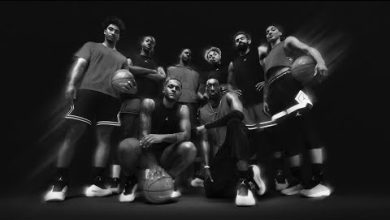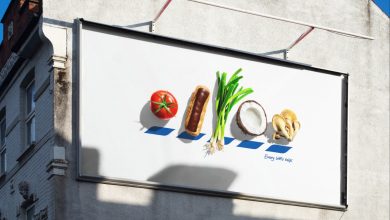Silent Creative: how no-sound ads win attention

Digital content consumption has transformed completely. Most social video views in the UK now happen without sound. Platforms like LinkedIn, Instagram, and Facebook automatically play videos on mute, which means audiences engage with ads through visuals alone, not audio.
This shift has rewritten the rules for advertisers. Traditional storytelling elements like narration, sound design, and music now take a back seat. Success hinges on visuals that communicate instantly and effectively. Silent creative is not just a backup plan. It has become a specialised discipline that relies on sharp art direction, bold typography, and emotional connection without any sound.
Frictionless Visuals
Silent creative works align with how people actually behave online. Most users browse social platforms in quiet environments, while commuting, at work, or relaxing at home. Ads need to deliver their message purely through visuals, using captions, motion graphics, and strong design elements to engage viewers.
This visual-first approach has become essential across industries where user trust hinges on immediate clarity. In competitive digital markets, brands must communicate complex benefits such as speed, security, and reliability through design elements alone, since most users encounter their ads while scrolling silently through social feeds. A clear example comes from online entertainment, like the best casinos with fast withdrawal, highlighting platforms that build trust by showing instant payouts and reassurance visually. These sectors have pioneered techniques for turning abstract ideas like fast and secure into visual narratives that work without sound. Those same techniques are now shaping best practice in silent creative advertising.
Storytelling Without Sound
Without audio, every other visual cue becomes more important. Colour, pacing, typography, and visual metaphor must carry the narrative. Campaigns that once relied on voiceover or soundtrack now depend on design alone to create an emotional connection.
Recent data underscores how dominant short video is, and how essential captions and visual pacing have become. Over 89% of businesses now use video marketing, and short-form formats deliver the highest return on investment. On Instagram and X (formerly Twitter), videos under 15 seconds perform best, while TikTok thrives on clips lasting 15 to 60 seconds. These trends show how critical it is to capture attention fast and finish strong, tasks best suited to silent creative.
This forces agencies and brands back to the fundamentals. Every frame, transition, and visual element must serve a purpose, because in a sound-off world, they may be all that the viewer experiences. In that sense, silent creative is a refinement of storytelling, where visual discipline is everything.
Cutting Through Fatigue
UK audiences increasingly complain about the sheer volume of online advertising. Poor targeting, overexposure, and intrusive design have created widespread ad fatigue. Silent creatives offer a solution.
These soundless ads blend naturally into social feeds, feeling less like interruptions and more like regular content. They reduce banner blindness and ad-skipping by working with user behaviour rather than fighting against it. This subtle approach can boost completion rates and improve brand recall. In an oversaturated market, silence often cuts through noise more effectively than actual sound.
Accessibility as Advantage
Silent creative delivers built-in accessibility benefits. It makes advertising more accessible for hearing-impaired users, multilingual audiences, and anyone in sound-restricted settings.
Yet many campaigns still overlook this. A recent AbilityNet factsheet highlights that captioning content can increase engagement by up to 40 percent and that as much as 85 percent of video viewing happens with the sound off, by choice. This shows just how critical it is to design for mute viewing, not as an afterthought but as standard practice. Inclusive design is not just about ticking a compliance box. It’s a strategic advantage. Brands that embrace accessibility from the start build trust, expand their audience, and show they truly understand how people consume content. Silent creative embeds inclusivity by default.
Beyond Social Feeds
While silent creative has gained the strongest traction on social media, its influence is expanding. Connected TV, digital out-of-home advertising, and in-app formats increasingly need ads that communicate visually without sound. Busy environments and multitasking audiences often make audio secondary or irrelevant.
This creates interesting creative challenges. If visuals dominate, how should brands adapt their audio identities? Will motion graphics, logos, and design elements become the new hallmarks of brand recognition? Rather than limiting creative possibilities, silent-first design could spark a visual branding renaissance, pushing advertisers to innovate beyond traditional TV commercial formats.
Conclusion: The Discipline of Silence
Silent creativity is not a limitation. It is a discipline that sharpens advertising fundamentals: clarity, understanding of user context, and the ability to communicate instantly. In the UK, where audiences expect convenience, accessibility, and trust from every digital interaction, silent ads set a new standard.
Just as seamless digital services earn loyalty by eliminating delays and complexity, silent-first advertising captures attention by removing barriers to engagement. In a world where mute is the default setting, silence has become one of advertising’s most powerful tools.









